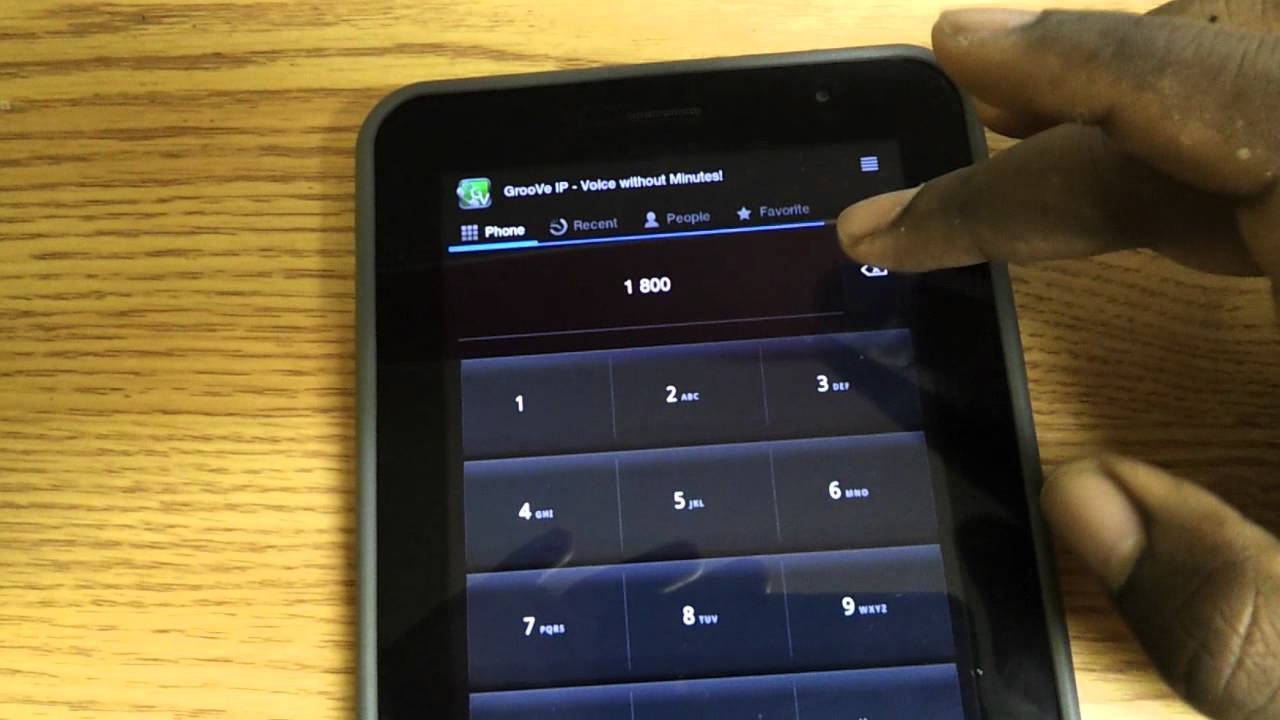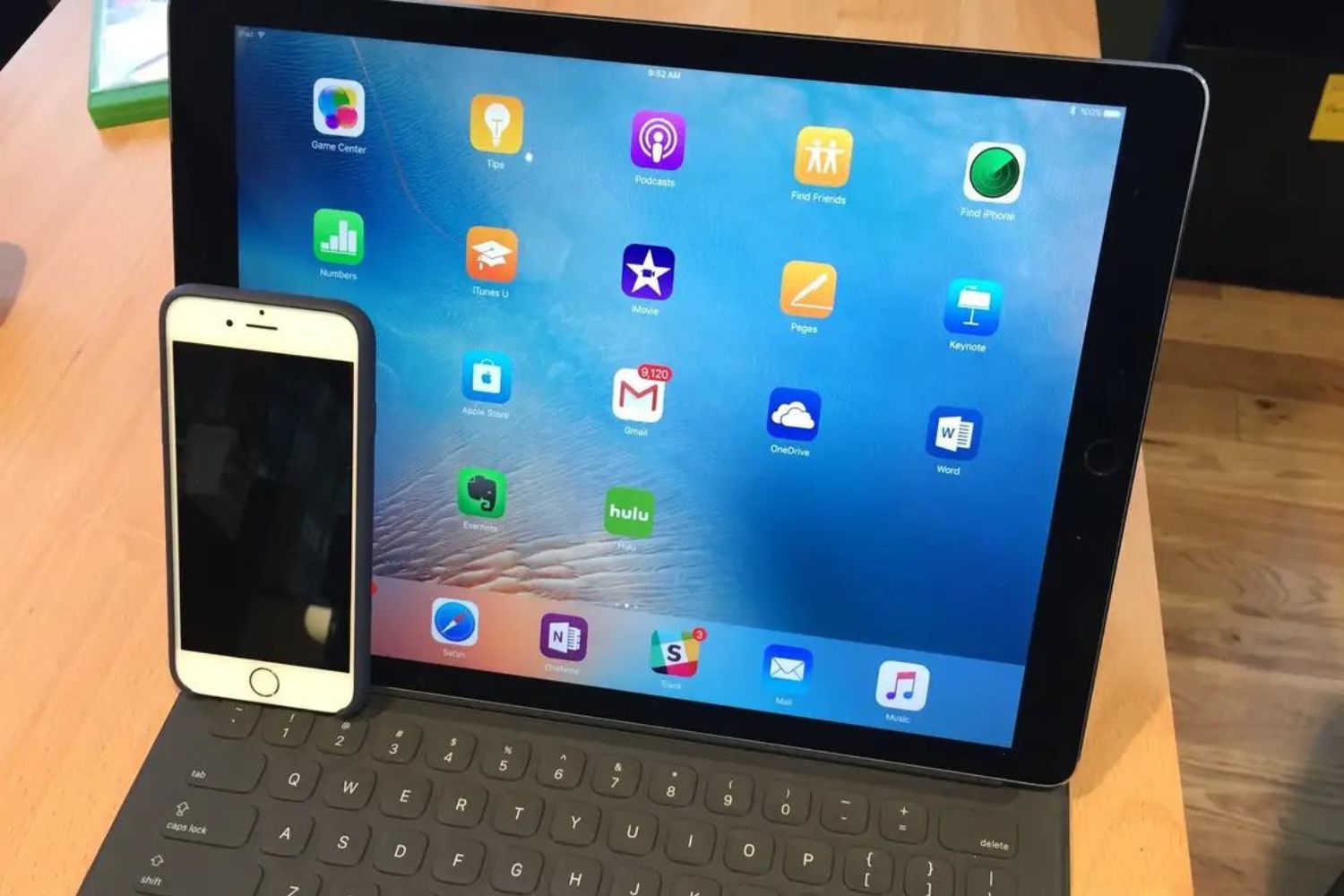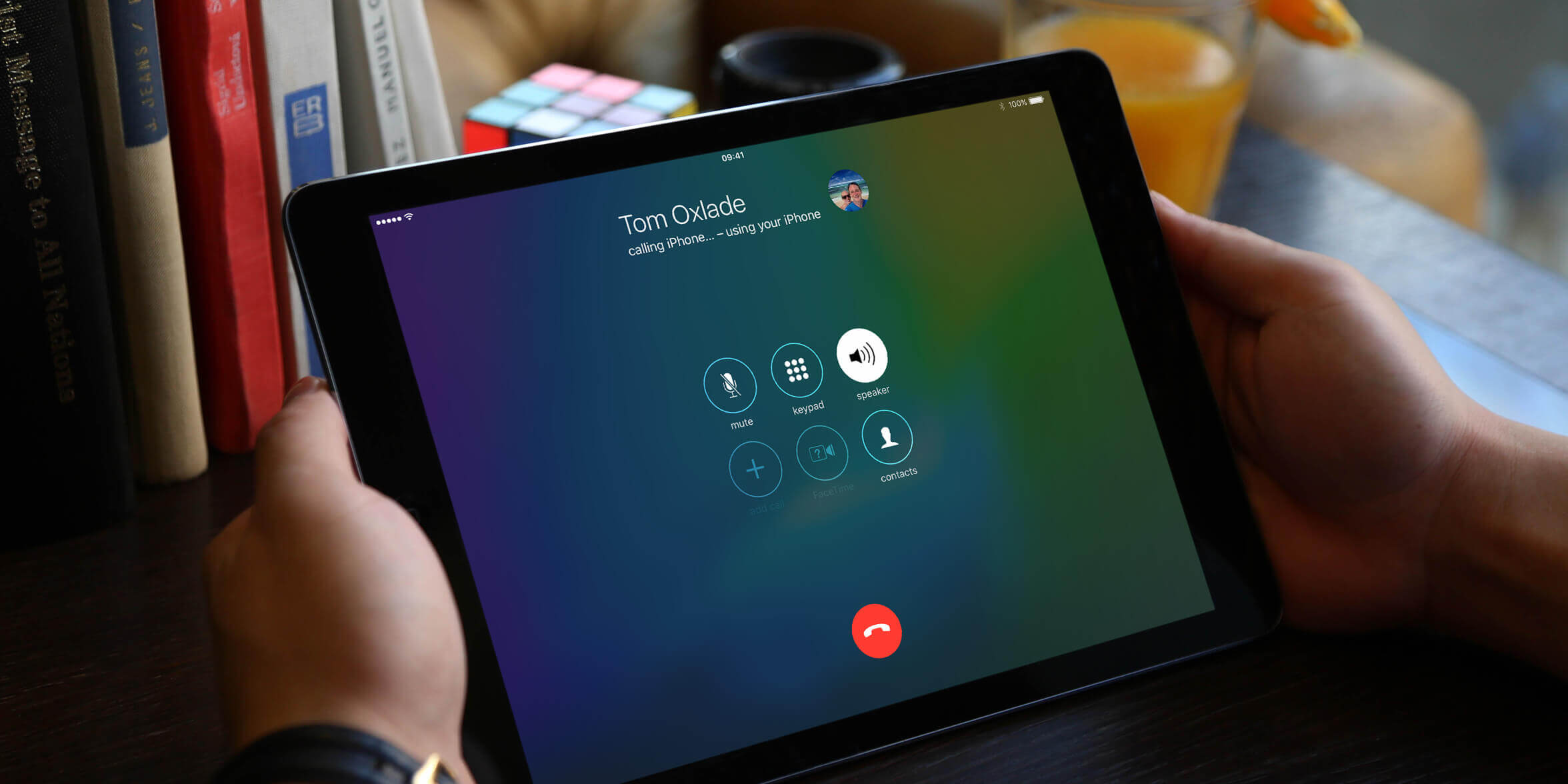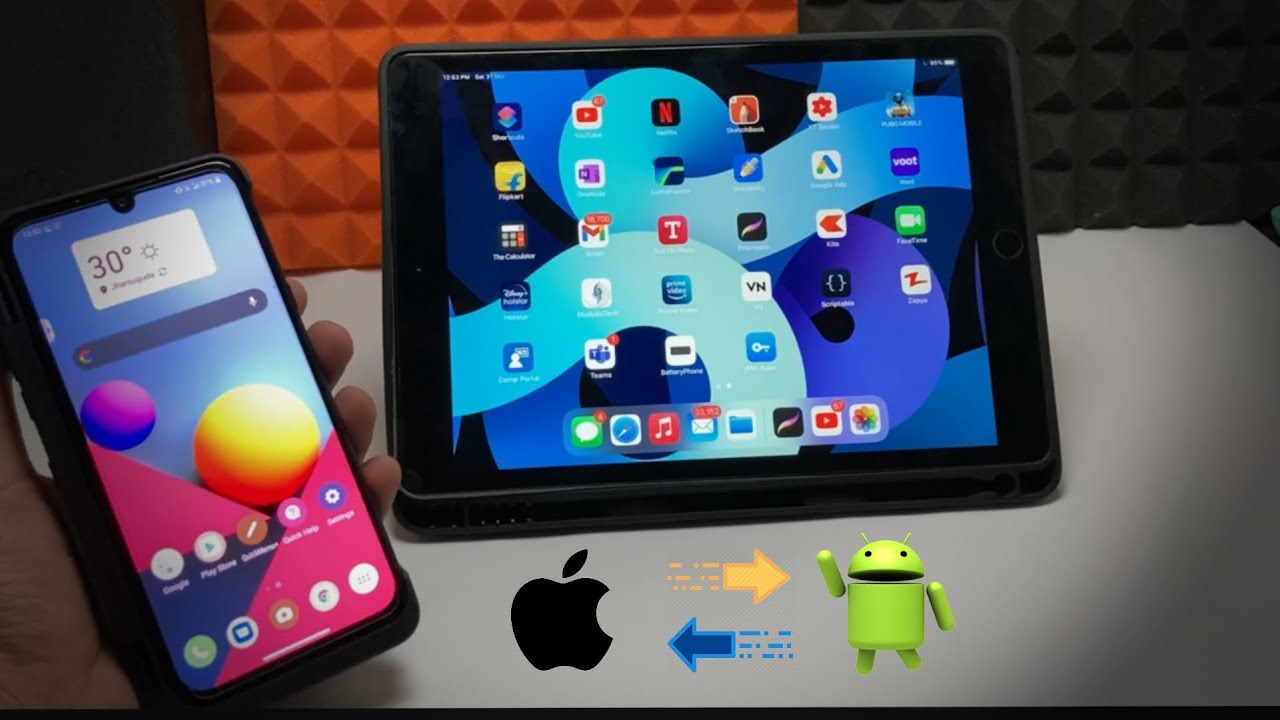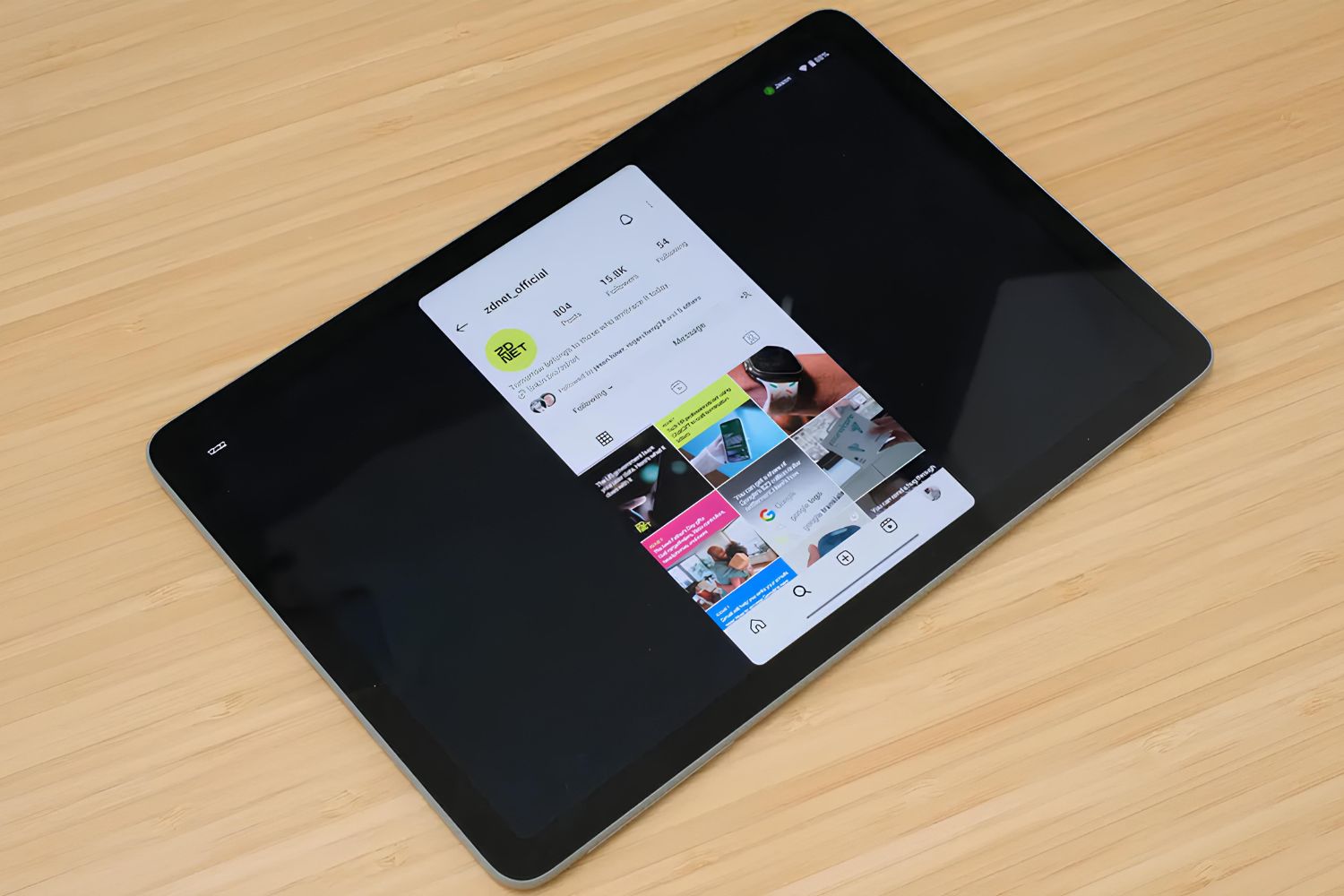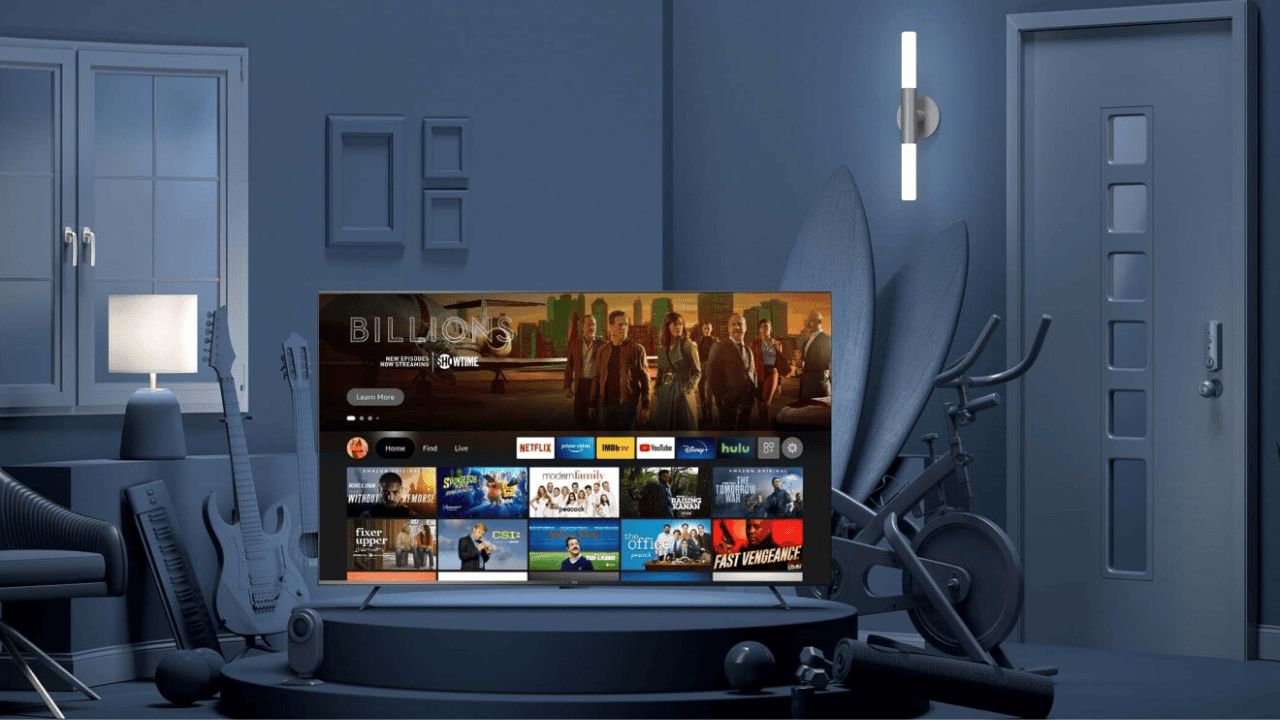Introduction
Welcome to the world of versatility and convenience! In this modern era, tablets have evolved from being mere entertainment devices to powerful tools that can handle various tasks, including the ability to make phone calls. Yes, you heard it right – your tablet can double up as a phone!
Gone are the days when you had to carry a phone and a tablet separately. With the right setup and a few easy steps, you can transform your tablet into a fully functional phone, allowing you to stay connected wherever you go. Whether you’re using an Android tablet or an iPad, this guide will walk you through the process of using your tablet as a phone and help you make the most out of its features.
Before we dive into the nitty-gritty, let’s address a common question: why would you want to use your tablet as a phone? There are several benefits to consider. First, it eliminates the need to carry multiple devices, streamlining your daily life and reducing the clutter in your bag or pocket. Second, it allows you to enjoy the larger screen and enhanced user experience that tablets offer when making and receiving calls. Additionally, using your tablet as a phone can be a cost-effective solution, as you can save on the expenses of buying a separate smartphone and paying for an additional phone plan.
We understand that the idea of using a tablet as a phone might seem daunting or unfamiliar at first, but fear not! This comprehensive guide will provide you with step-by-step instructions, tips, and troubleshooting advice to ensure a smooth transition into using your tablet as a phone. Whether you’re a tech-savvy individual or a beginner, this guide is designed to cater to your needs and make the process as simple and straightforward as possible.
So, if you’re ready to liberate your tablet and unleash its hidden potential, let’s begin with the first step – setting up your tablet as a phone. Get ready to embrace the convenience and flexibility that comes with consolidating your devices in one powerful package!
Section 1: Setting up your tablet as a phone
If you’re ready to transform your tablet into a fully functional phone, the first step is to ensure that your tablet has the necessary capabilities and settings to make and receive calls. While the process may vary slightly depending on the device and operating system you’re using, the general steps remain the same. Let’s dive in!
1. Check for built-in calling features: Some tablets come with native calling capabilities, especially those with cellular connectivity. If your tablet has a SIM card slot and supports cellular data, it likely has the ability to make calls. Check your device’s specifications or consult the user manual to confirm this feature.
2. Activate SIM card and phone plan: If your tablet supports calling functionality, ensure that your tablet is equipped with a valid SIM card. Contact your mobile service provider to activate a phone plan for your tablet. They will help you choose the appropriate plan that suits your needs, whether it’s a prepaid or postpaid option.
3. Configure VoIP (Voice over Internet Protocol) apps: If your tablet doesn’t have built-in calling functionality, don’t worry! You can still use various VoIP apps that utilize internet or Wi-Fi connections to make and receive calls. Popular VoIP apps include Skype, WhatsApp, Google Hangouts, and Viber. Download and install the app of your choice from the app store and follow the app’s instructions to set it up.
4. Pair your tablet with a Bluetooth headset or earphones: To enhance the calling experience on your tablet, consider pairing your device with a Bluetooth headset or earphones. This allows for hands-free calling and better audio quality during conversations. Simply turn on the Bluetooth feature on your tablet and pair it with your headset following the manufacturer’s instructions.
5. Configure call settings: Once you have set up the calling capability on your tablet, it’s important to configure call settings according to your preferences. Access the settings menu on your tablet, navigate to the “Phone” or “Call” section, and customize options such as call forwarding, call waiting, voicemail, and caller ID display.
With these steps completed, your tablet is now ready to take on its new role as a phone. Whether you’re using native calling features or VoIP apps, you can now make and receive calls directly from your tablet. Stay tuned for the next section, where we’ll explore how to make calls from your tablet, ensuring you never miss an important conversation or connection!
Section 2: Making calls from your tablet
Now that you have set up your tablet as a phone, it’s time to learn how to make and receive calls seamlessly. Whether you’re using the built-in calling feature or a VoIP app, making calls from your tablet is simple and straightforward. Let’s explore the different methods below:
1. Using the built-in calling feature: If your tablet has native calling capabilities, making calls is similar to using a traditional phone. Open the phone app on your tablet, which is usually represented by a phone icon, and you’ll be greeted with a dial pad. Simply enter the phone number you want to call using the on-screen keypad and press the call button. To make things even easier, you can also access your contacts through the phone app and select the person you wish to call.
2. Making calls with VoIP apps: If you’re using a VoIP app like Skype, WhatsApp, or Google Hangouts, the process is slightly different. Open the app and navigate to the “Calls” or “Dialer” section. From there, you can enter a phone number or choose a contact to initiate a call. These apps utilize your internet or Wi-Fi connection to make calls, so ensure that you have a stable and reliable internet connection for optimal call quality.
3. Hands-free calling with Bluetooth: Remember that Bluetooth headset or earphones we mentioned earlier? Now is the perfect time to utilize them. Once you have established a call, you can simply wear your Bluetooth headset or earphones to enjoy hands-free calling. This is especially useful if you’re multitasking or need to keep your hands free while on a call.
4. Answering incoming calls: When a call comes in, whether it’s from a traditional phone number or through a VoIP app, your tablet will display an incoming call notification. You can answer the call by tapping the answer/accept button or swiping the screen. If you’re using a Bluetooth headset, you can also press the answer button on your headset to pick up the call.
With these methods, making calls from your tablet becomes a breeze. Whether you’re conducting business calls, catching up with friends and family, or organizing conference calls, your tablet provides the functionality and convenience of a phone in a larger, more versatile package. In the next section, we’ll explore another essential feature of phone communication – sending and receiving text messages from your tablet!
Section 3: Sending and receiving text messages
In addition to making calls, your tablet can also handle text messaging, allowing you to stay connected through SMS or messaging apps. Whether you prefer the traditional SMS method or opt for messaging apps like WhatsApp or Facebook Messenger, sending and receiving text messages on your tablet is a breeze. Let’s explore the different options:
1. Using the built-in messaging app: Most tablets come equipped with a pre-installed messaging app that allows you to send and receive SMS. Open the messaging app on your tablet, which is usually represented by a messaging or chat icon, and you’ll be presented with a conversation or inbox view. To compose a new message, tap on the “+” or “New Message” button, enter the recipient’s phone number or choose a contact from your address book, type your message, and press send. You can also view and reply to incoming messages in the same app.
2. Using messaging apps: If you prefer using messaging apps like WhatsApp, Facebook Messenger, or Telegram, you can download and install these apps from the app store on your tablet. Once installed, open the messaging app, sign in or create an account if required, and you’ll have access to your contacts or a list of conversations. To send a message, select the contact or conversation, type your message, and hit send. You can also receive and reply to messages within the conversation view of the app.
3. Syncing messages across devices: One of the advantages of using messaging apps is the ability to sync your messages across multiple devices. This means that you can start a conversation on your tablet and continue it seamlessly on your smartphone or computer. Just ensure that you’re signed in to the same account across your devices to access your messages.
4. Embracing chat features: Some tablets also support enhanced chat features, such as RCS (Rich Communication Services) or iMessage. These features provide a more interactive and feature-rich messaging experience, including read receipts, typing indicators, and the ability to send multimedia files. If your tablet supports these features, make sure to enable them in the messaging settings to take advantage of the enhanced messaging capabilities.
With these methods and options, you can easily send and receive text messages on your tablet. Whether you prefer the simplicity of traditional SMS or the versatility of messaging apps, your tablet offers the flexibility to communicate through text on a larger and more immersive screen. In the next section, we’ll explore how to utilize mobile data and Wi-Fi connections on your tablet to stay connected wherever you go!
Section 4: Using mobile data and Wi-Fi on your tablet
To fully utilize your tablet as a phone, it’s essential to understand how to connect to the internet using mobile data and Wi-Fi. Whether you’re on the go or within the comfort of your home or office, your tablet can leverage these connectivity options to keep you connected. Let’s explore how to make the most out of mobile data and Wi-Fi on your tablet:
1. Mobile data connection: If your tablet has cellular connectivity, you can access the internet using mobile data, just like you would on a smartphone. Ensure that your tablet has a valid SIM card with an active data plan. To enable mobile data, go to the settings menu on your tablet, navigate to the “Connections” or “Network” section, and toggle the mobile data switch to the “On” position. You can also configure APN (Access Point Name) settings by contacting your mobile service provider if required.
2. Wi-Fi connection: Connecting to Wi-Fi networks provides a stable and often faster internet connection on your tablet. To connect to Wi-Fi, access the settings menu on your tablet and navigate to the “Wi-Fi” section. Toggle the Wi-Fi switch to the “On” position, and your tablet will scan for available networks. Select your desired network from the list, enter the password if required, and tap “Connect.” Once connected, your tablet will remember the network, and you’ll automatically connect whenever you’re within range.
3. Hotspot feature: Another handy feature of your tablet is the ability to share your internet connection with other devices by using it as a Wi-Fi hotspot. This feature can be particularly useful if you’re in a location without Wi-Fi or if you want to share your mobile data with other devices. To enable the hotspot feature, go to the settings menu on your tablet and navigate to the “Hotspot” or “Tethering” section. Follow the prompts to set up a hotspot with a unique name (SSID) and password. Other devices can then connect to your tablet’s hotspot like they would with any other Wi-Fi network.
4. Data usage management: It’s important to keep track of your data usage, especially if you have a limited data plan. Most tablets have a built-in data usage tracker that allows you to monitor how much data you’ve consumed. To access this feature, go to the settings menu on your tablet and navigate to the “Data usage” or “Network & Internet” section. From there, you can set data usage alerts, view usage statistics by app, and even restrict background data usage for specific apps to conserve data.
By understanding and utilizing mobile data and Wi-Fi connections on your tablet, you can enjoy seamless internet access for making calls, sending messages, browsing the web, streaming media, and much more. Now that you’re connected, let’s explore how to manage your contacts, call history, and other communication essentials in the next section!
Section 5: Managing contacts and call history
Efficiently managing your contacts and call history is essential when using your tablet as a phone. Whether you need to find a contact quickly, review past calls, or organize your address book, your tablet provides convenient tools to streamline these tasks. Let’s delve into how you can effectively manage your contacts and call history:
1. Adding and organizing contacts: To add a new contact on your tablet, open the contacts app or navigate to the phone app with built-in contact management. Tap on the “+” or “Add Contact” button, and you’ll be prompted to fill in details such as the contact’s name, phone number, email, and additional information. You can also assign a picture or assign the contact to a specific group or category to keep things organized.
2. Importing and syncing contacts: If you already have contacts saved on your other devices or accounts, it’s convenient to import or sync them to your tablet. Most tablets allow you to import contacts from various sources such as your SIM card, Google account, iCloud, or other contact management apps. Simply go to the settings menu on your tablet, navigate to the “Accounts” or “Contacts” section, and select the option to sync or import contacts from the desired source.
3. Viewing and managing call history: Your tablet keeps a record of all incoming, outgoing, and missed calls in the call history section. To access your call history, open the phone app or the call history tab within the contacts app. You’ll see a chronological list of your recent calls, including the contact name, phone number, date, and time of the call. From here, you can tap on a specific call to view more details, such as call duration or the option to call back or send a message.
4. Editing and deleting contacts: If you need to make changes to a contact, such as updating their phone number or email address, simply locate the contact in your contacts app and tap on their name to open their details. From there, you can edit or delete specific information or the entire contact if necessary.
5. Contact synchronization with cloud services: To ensure that your contacts are consistently backed up and accessible across devices, consider syncing them with a cloud service like Google Contacts or iCloud. This way, if you ever switch devices or lose your tablet, you can easily restore your contacts without losing any valuable information.
By effectively managing your contacts and keeping track of your call history, you can easily find and reach out to the people you need, review past interactions, and keep your communication organized. With these essentials in place, let’s explore how you can expand your communication options on your tablet by utilizing additional communication apps in the next section!
Section 6: Using additional communication apps
While your tablet offers built-in calling and messaging features, there are various additional communication apps that you can leverage to enhance your connectivity and expand your communication options. These apps provide unique features, such as video calls, group chats, and multimedia sharing, allowing you to stay connected with friends, family, and colleagues in more dynamic ways. Let’s explore some of the popular communication apps and how you can use them on your tablet:
1. Video calling apps: Apps like Zoom, Skype, Google Meet, and FaceTime provide the ability to make high-quality video calls with individuals or groups. These apps are particularly useful for virtual meetings, video conferences, or staying in touch with loved ones through face-to-face conversations. Simply download the app from the app store, sign in or create an account, and you’re ready to start making video calls right from your tablet.
2. Social media messaging apps: Many social media platforms, such as Facebook, Instagram, and Twitter, have their own messaging features. These apps allow you to send direct messages to individuals or create group conversations. They also often support features like voice messaging, sharing photos or videos, and sending emojis or stickers. Install the desired social media apps on your tablet, sign in or create an account, and start exploring the messaging features they offer.
3. Collaborative messaging apps: If you need to collaborate with colleagues or work on projects together, collaborative messaging apps like Microsoft Teams, Slack, or Discord can be invaluable. These apps provide features such as group chats, file sharing, task management, and integration with other productivity tools. Install the collaborative messaging app of your choice on your tablet and join the relevant workspaces or channels to stay connected with your team.
4. Voice messaging apps: Voice messaging apps, such as WhatsApp or Telegram, allow you to send quick voice snippets or recordings to individuals or groups. This feature can be particularly useful when you need to convey a message without typing or if you prefer not to make a phone call. Install the voice messaging app, sign in or create an account, and discover the convenience of sending voice messages from your tablet.
5. Multi-platform messaging apps: Apps like WhatsApp, Telegram, or Signal are not only limited to mobile devices but also offer desktop or web versions. This allows you to seamlessly switch between your tablet and other devices while maintaining a continuous conversation. Simply install the app on your tablet and follow the instructions to sync your account and access your messages across platforms.
By utilizing these additional communication apps on your tablet, you can expand your connectivity options and tailor your communication experience according to your needs and preferences. Whether you’re engaging in video calls, collaborating with colleagues, or staying connected with friends through multimedia messaging, your tablet becomes a versatile tool for seamless communication. Now, let’s troubleshoot and address any common issues that you may encounter while using your tablet as a phone in the next section!
Section 7: Troubleshooting common issues
While using your tablet as a phone can offer numerous benefits, you may occasionally encounter some common issues. Understanding how to troubleshoot these problems will help ensure a smooth and uninterrupted communication experience. Let’s explore some common issues and their possible solutions:
1. No network or signal: If you’re unable to make or receive calls, check if you have a stable network connection. Ensure that your tablet is within range of a cellular network or connected to a reliable Wi-Fi network. If you’re using mobile data, make sure that mobile data is enabled in the settings menu. If the problem persists, try restarting your tablet or contacting your mobile service provider for assistance.
2. Poor call quality: If you’re experiencing poor call quality, such as dropped calls or muffled audio, it could be due to a weak network signal or interference. Move to an area with a stronger signal or connect to a Wi-Fi network if available. If using a VoIP app, ensure that you have a stable internet connection. Consider using a Bluetooth headset or earphones for clearer audio during calls.
3. App not working or crashing: If the calling or messaging app on your tablet is not working properly or frequently crashes, try closing the app and reopening it. Check for any available app updates in the app store and install them if necessary. If the issue persists, uninstall the app and reinstall it. If none of these steps work, you may need to contact the app’s support team or seek help from the device manufacturer.
4. Syncing issues: If your contacts or messages are not syncing properly across devices, ensure that you’re signed in to the same account on all devices. Go to the account settings on your tablet and ensure that contact or message syncing is enabled. If using cloud services, make sure that syncing is turned on and that you have a stable internet connection. If the problem persists, try signing out of the account and signing back in.
5. Battery drain: Using your tablet as a phone can increase battery usage compared to regular tablet usage. If you’re experiencing significant battery drain, consider optimizing your tablet’s settings. This may include lowering screen brightness, disabling unnecessary background apps, and managing data or Wi-Fi usage. You can also carry an external battery pack or charger for extended usage.
If you encounter any other issues while using your tablet as a phone, consult the user manual, check online forums or support websites specific to your device, or reach out to the device manufacturer for further assistance. Remember to stay updated with the latest software updates as they often include bug fixes and improvements to enhance the performance of your tablet.
By troubleshooting these common issues, you can minimize disruptions and ensure that your tablet continues to serve as a reliable and efficient phone. Now that you have a comprehensive understanding of using your tablet as a phone and addressing potential issues, you can confidently embrace the versatility and convenience it offers for your communication needs.
Conclusion
Congratulations, you’ve successfully explored the world of using your tablet as a phone! By following the steps outlined in this guide, you’ve learned how to set up your tablet as a phone, make calls, send text messages, utilize mobile data and Wi-Fi, manage contacts and call history, use additional communication apps, and troubleshoot common issues along the way.
Using your tablet as a phone provides a range of benefits, including streamlining your devices, enjoying a larger screen for communication, and potentially saving on costs. The versatility and convenience offered by a tablet allow you to stay connected wherever you go, whether it’s for personal or professional purposes.
Remember to periodically check for software updates for your tablet and the communication apps you use. These updates often bring new features, bug fixes, and security enhancements that can further improve your communication experience.
As technology continues to advance, the capabilities of tablets as phones will likely expand even further, offering new features and possibilities. Stay curious and open to exploring new apps and functionalities that become available in the future to make the most out of your tablet as a phone.
Whether you’re using an Android tablet or an iPad, the steps and tips provided in this guide should serve as a solid foundation for utilizing your tablet as a phone. Embrace the convenience, flexibility, and connectivity that your tablet offers, and enjoy the seamless communication experience it provides.
So go ahead, make that phone call, send that text message, join that video call, and keep in touch with those who matter most. Your tablet is now equipped to handle all your communication needs, making your life easier and more connected. Happy communicating!










